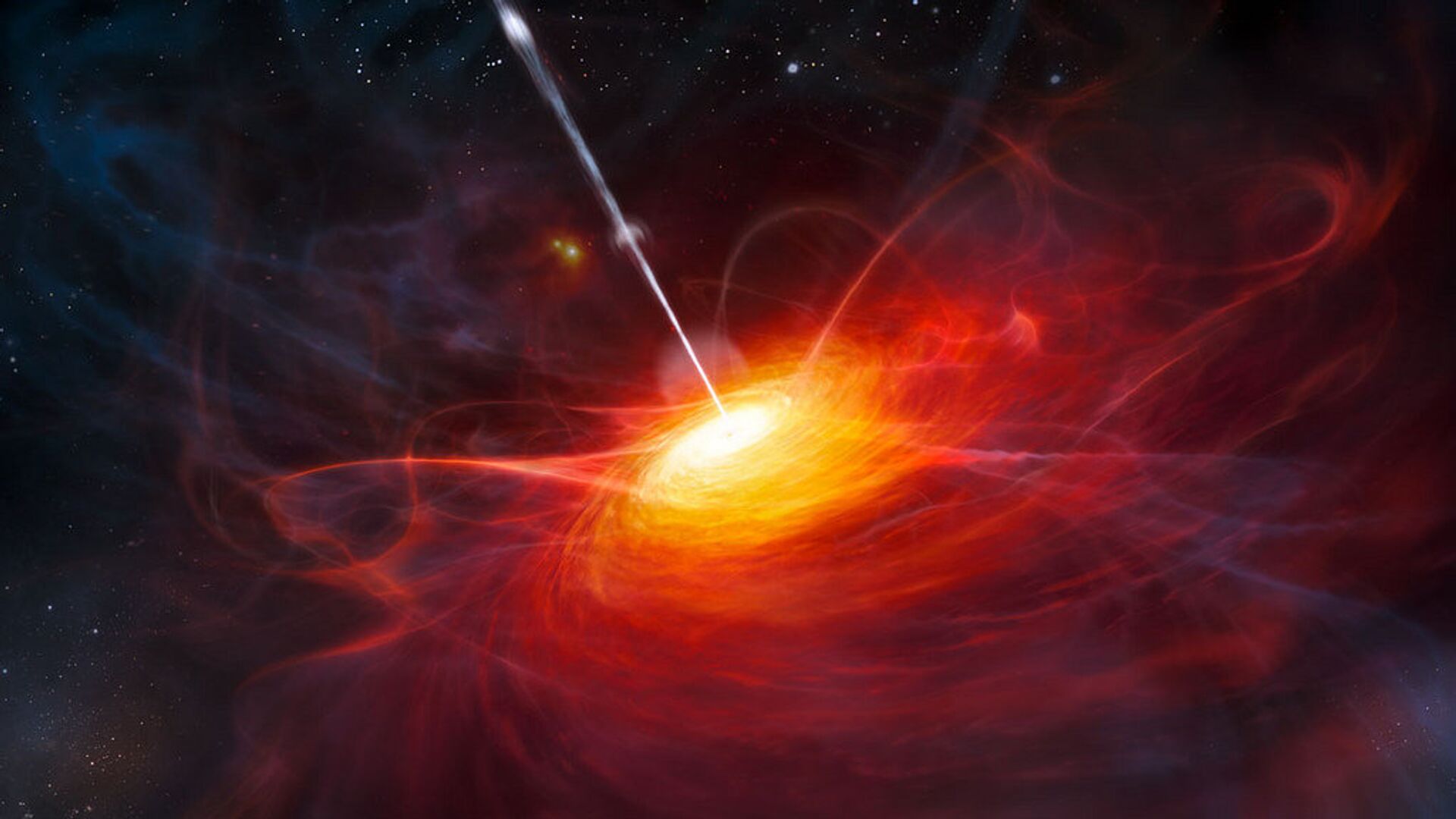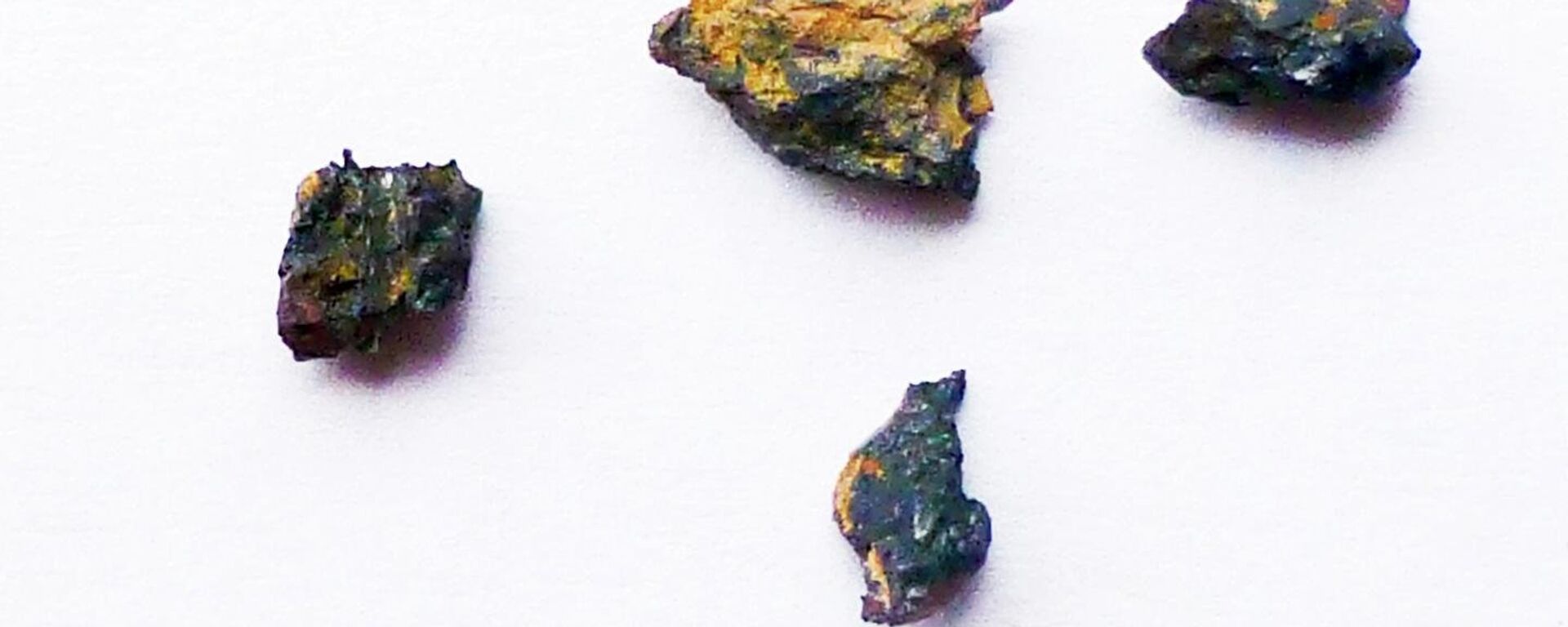https://sputnikglobe.com/20220929/possible-remains-of-one-of-the-universes-first-stars-discovered-1101352733.html
Possible Remains of One of the Universe’s First Stars Discovered
Possible Remains of One of the Universe’s First Stars Discovered
Sputnik International
A new study may help scientists gain insight into how matter in the universe evolved over time. 29.09.2022, Sputnik International
2022-09-29T17:53+0000
2022-09-29T17:53+0000
2022-09-29T17:53+0000
science & tech
supernova
remains
universe
matter
https://cdn1.img.sputnikglobe.com/img/101876/47/1018764718_0:16:1024:592_1920x0_80_0_0_291c5b3b841065917c825e32115d9651.jpg
Using the 8.1-meter Gemini North telescope in Hawaii, astronomers have managed to locate the remains of what might have been one of the first stars to appear in the universe.According to a press release by the Association of Universities for Research in Astronomy, scientists analyzed “one of the most distant known quasars” and now postulate that the ratio of chemical elements they discovered could only be the result of a first-generation star exploding as a pair-instability supernova.A pair-instability supernova is theorized to be a much more powerful version of a supernova explosion, none of which have been observed so far. They are believed to have occurred when a truly massive star with a mass between 150 and 250 times that of our Sun reaches the end of its life.If the astronomers’ hypothesis is correct and the object of their research is indeed a remnant of a pair-instability supernova, their discovery could shed further light on how the matter in the universe evolved over time, the press release pointed out.Also, astronomers might be able to discover more signatures of other pair-instability supernovas “still imprinted on objects in our local Universe.”“We now know what to look for; we have a pathway,” said another author of the new study, astronomer Timothy Beers of the University of Notre Dame. “If this happened locally in the very early Universe, which it should have done, then we would expect to find evidence for it.”
https://sputnikglobe.com/20220518/possible-first-evidence-of-rare-supernova-type-found-in-ancient-stone-of-alien-origin-1095614210.html
Sputnik International
feedback@sputniknews.com
+74956456601
MIA „Rossiya Segodnya“
2022
Sputnik International
feedback@sputniknews.com
+74956456601
MIA „Rossiya Segodnya“
News
en_EN
Sputnik International
feedback@sputniknews.com
+74956456601
MIA „Rossiya Segodnya“
Sputnik International
feedback@sputniknews.com
+74956456601
MIA „Rossiya Segodnya“
science & tech, supernova, remains, universe, matter
science & tech, supernova, remains, universe, matter
Possible Remains of One of the Universe’s First Stars Discovered
A new study may help scientists gain insight into how matter in the universe evolved over time.
Using the 8.1-meter Gemini North telescope in Hawaii, astronomers have managed to locate the remains of what might have been one of the first stars to appear in the universe.
According to a press release by the Association of Universities for Research in Astronomy, scientists analyzed “one of the most distant known quasars” and now postulate that the ratio of chemical elements they discovered could only be the result of a first-generation star exploding as a pair-instability supernova.
A pair-instability supernova is theorized to be a much more powerful version of a supernova explosion, none of which have been observed so far. They are believed to have occurred when a truly massive star with a mass between 150 and 250 times that of our Sun reaches the end of its life.
“It was obvious to me that the supernova candidate for this would be a pair-instability supernova of a population III star, in which the entire star explodes without leaving any remnant behind,” said Yuzuru Yoshi from the University of Tokyo, one of the authors of the study. “I was delighted and somewhat surprised to find that a pair-instability supernova of a star with a mass about 300 times that of the Sun provides a ratio of magnesium to iron that agrees with the low value we derived for the quasar.”
If the astronomers’ hypothesis is correct and the object of their research is indeed a remnant of a pair-instability supernova, their discovery could shed further light on how the matter in the universe evolved over time, the press release pointed out.
Also, astronomers might be able to discover more signatures of other pair-instability supernovas “still imprinted on objects in our local Universe.”
“We now know what to look for; we have a pathway,” said another author of the new study, astronomer Timothy Beers of the University of Notre Dame. “If this happened locally in the very early Universe, which it should have done, then we would expect to find evidence for it.”


